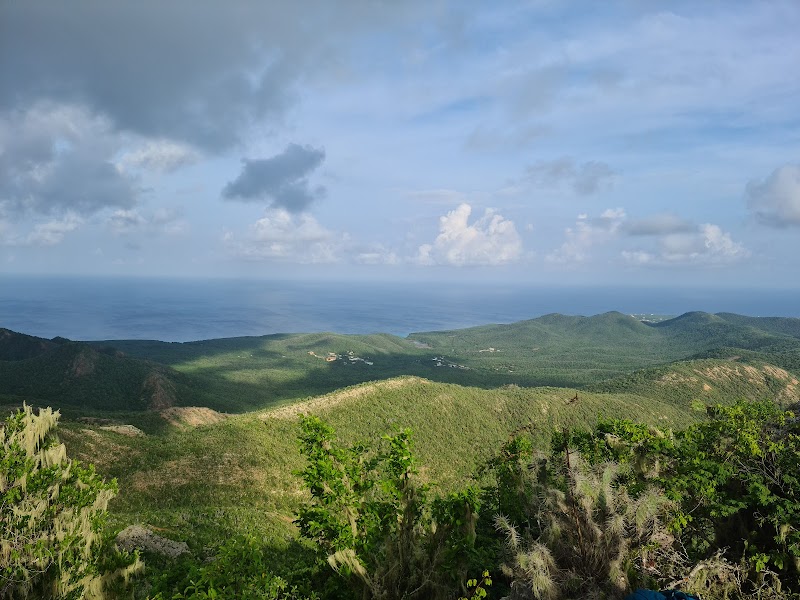Exploring Westpunt, Curaçao: Top Scenic Hikes and Snorkeling Spots
Westpunt, Curaçao offers rugged coastal hikes and world-class snorkeling spots that invite adventurers to engage directly with the island's vibrant landscape and underwater life. Discover practical routes and essential tips for exploring this scenic corner of the Caribbean.
Start Early to Beat the Heat
Hiking in Westpunt’s sun-exposed terrain is best done before 9 AM to avoid high temperatures and strong sun exposure.
Hydration Is Non-negotiable
Bring at least 2 liters of water per person for hikes and additional fluids for snorkeling days to stay properly hydrated.
Wear Sturdy Shoes
The limestone and rocky terrain demand shoes with good grip and ankle support to prevent slips and injuries.
Use Reef-Safe Sunscreen
Protect your skin and the coral reefs by using environmentally friendly sunscreen products before snorkeling.
Exploring Westpunt, Curaçao: Top Scenic Hikes and Snorkeling Spots
Westpunt, on the rugged northwest tip of Curaçao, demands attention with its raw coastline and vibrant underwater life. The trails here are straightforward but unyielding, pushing hikers to engage with the island as something fiercely itself—not a backdrop but an active participant. The terrain varies from limestone cliffs that rise roughly 150 meters above clear Caribbean waters to sandy, uneven paths that weave through sparse scrub and cactus-studded hills.
Start your exploration with the Christoffelberg hike, the highest point on the island. The route covers approximately 3.5 kilometers round trip with an elevation gain of about 375 meters. The path snakes through dry forest, where the sun presses down and the breeze occasionally offers reprieve. Toward the summit, the air tightens, and the vegetation thins, letting the view take over: a sweeping panorama of Westpunt’s shoreline, small coves daring you to dive in, and the endless sprawl of blue beyond.
For those seeking less vertical strain, the Shete Boka Trail traces the jagged coastline nearby. This 2.5-kilometer loop is mostly flat but uneven, crossing rocky outcrops where powerful waves push salt spray into the air, as if the ocean itself insists on marking its territory. Here, dramatic coves and hidden sea caves punctuate the walk, offering spots to pause and listen to the ocean’s voice.
Once on land, the water begs for more attention. Playa Kalki (also known as Alice in Wonderland) is a snorkeler's gem just a short drive from Westpunt. The bay’s shallow reefs start within meters of the shore, allowing you to glide over vibrant coral gardens teeming with parrotfish, angelfish, and the occasional graceful sea turtle. The sea here is generally calm in the early morning, with visibility easily exceeding 20 meters.
Alternatively, the nearby Tugboat wreck dive offers a slightly deeper exploration beneath the surface. Resting on its starboard side at about 12 meters, this site serves both snorkelers and beginner divers, its structure alive with marine growth and swarms of tropical fish.
Preparation is straightforward but critical. Carry at least two liters of water, wear sturdy hiking shoes for uneven limestone, and schedule hikes early to avoid midday heat. For snorkeling, reef-safe sunscreen and protective footwear are recommended to prevent sunburn and foot injuries on coral.
Westpunt’s allure is in its unpolished openness. The island's environment, from its climbs to the currents beneath the surface, beckons respect and readiness. The reward? Clear views, quieter pursuits, and a connection to Curaçao’s coastline as something not just seen but felt.
Nearby Trips
All Adventures
Boat Charters
Water Activities
Adventures near Willemstad
Discover the unique and memorable adventures that make Willemstad special.
Frequently Asked Questions
Are the hiking trails around Westpunt well-marked?
Trails like Christoffelberg and Shete Boka are marked but can be faint in places due to natural erosion; carrying a map or GPS is recommended.
Can beginners handle the Christoffelberg hike?
Yes, with moderate fitness and proper preparation. The climb is steady but manageable, though caution is needed near the summit's loose rocks.
What marine life is commonly seen while snorkeling near Westpunt?
Expect colorful coral fish such as parrotfish and angelfish, along with occasional sightings of sea turtles and rays in clear waters.
Is it safe to snorkel around the Tugboat wreck?
The wreck is accessible and generally safe for snorkelers with basic swimming skills, but currents can vary, so check local reports before entering.
Are there any cultural or historical sites accessible via hikes in Westpunt?
The surrounding area holds colonial-era plantations ruins visible from trails, reflecting Curaçao’s agricultural past and adding layers to the landscape.
How do I minimize environmental impact while exploring Westpunt?
Stick to established trails, avoid touching coral while snorkeling, use reef-safe sunscreen, and carry out all trash to preserve the area's natural integrity.
Recommended Gear
Sturdy Hiking Shoes
Needed for rocky, uneven limestone paths to ensure stability and prevent foot injuries.
Reef-Safe Sunscreen
Protects skin while preserving coral health during snorkeling and hikes under direct sun.
Hydration Pack or Water Bottle
Essential for maintaining hydration in Curaçao’s dry and hot climate during outdoor activities.
Snorkeling Gear (Mask, Snorkel, Fins)
Allows exploration of reefs and wrecks with ease and comfort; bring your own for best fit and hygiene.
Local Insights
Hidden Gems
- "The Boka Tabla cave at Shete Boka, where waves pulse and crash beneath narrow rocky openings."
- "Small coastal viewpoints along unmarked trails offering untouched views of the eastern Caribbean horizon."
Wildlife
- "The Curaçao whiptail lizard, common on rocky outcrops."
- "Brown pelicans gliding low over the shoreline."
- "Sea turtles frequently visit near Playa Kalki’s coral reefs."
History
"Westpunt was historically a center for plantations and salt harvesting during the Dutch colonial era; remnants of old farmhouses can be seen along some trails, linking the landscape to its cultural past."

